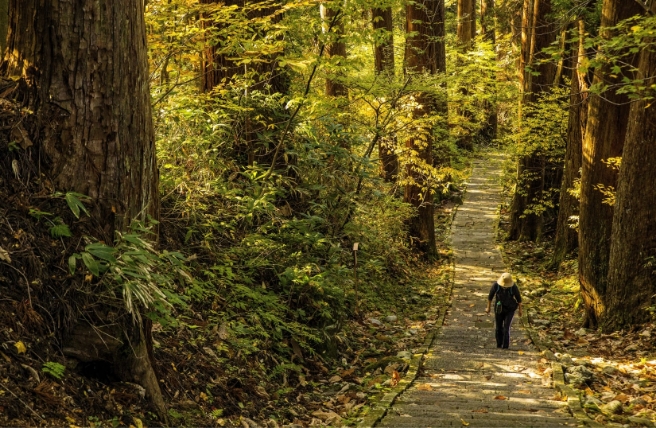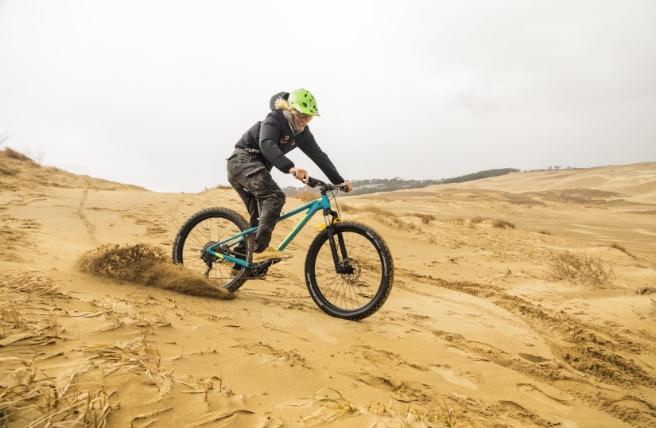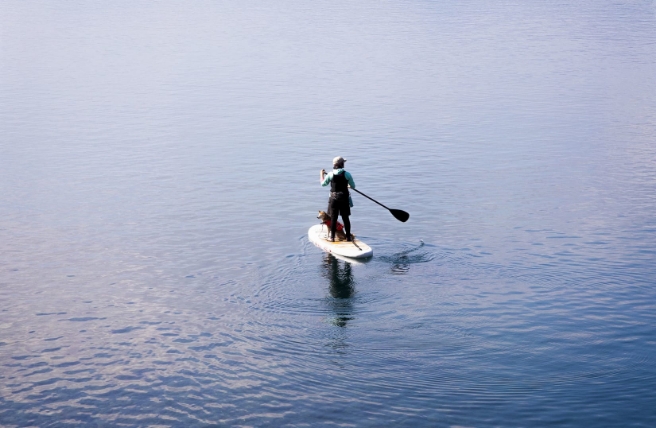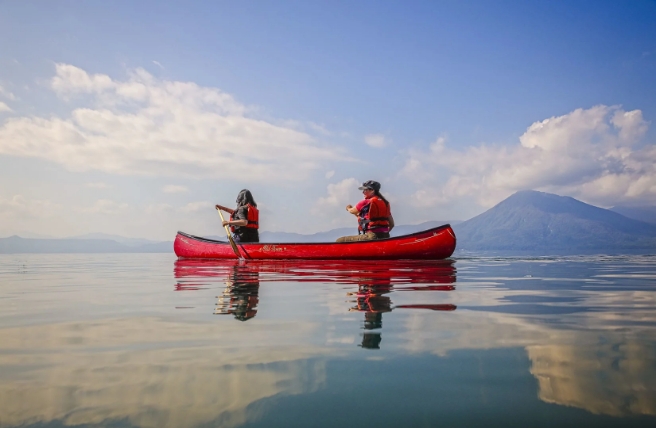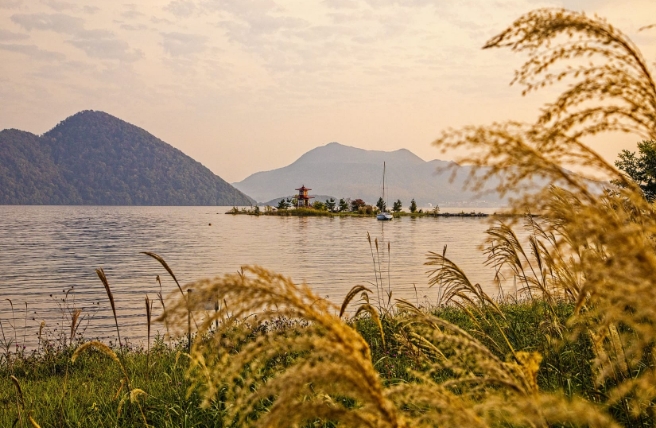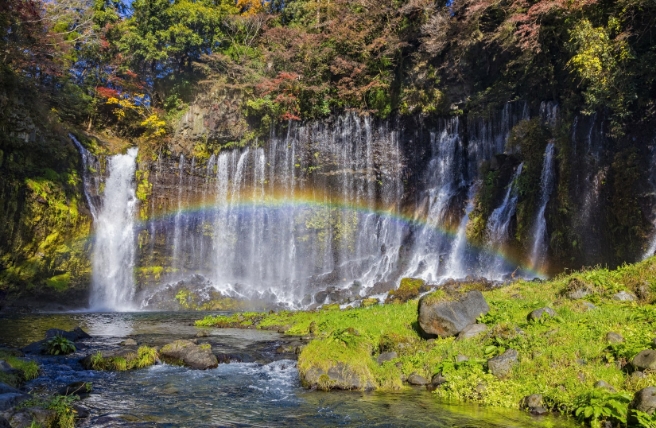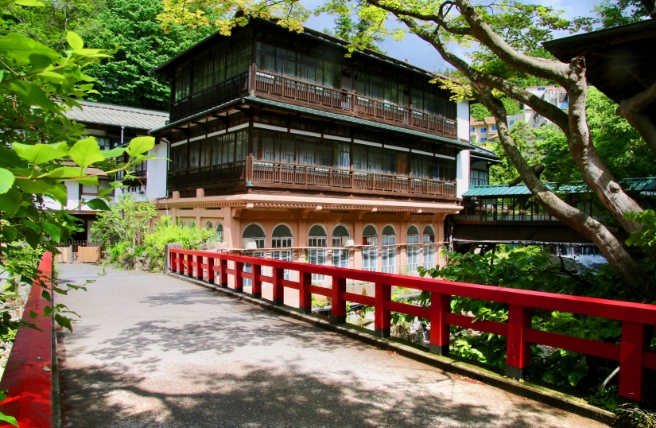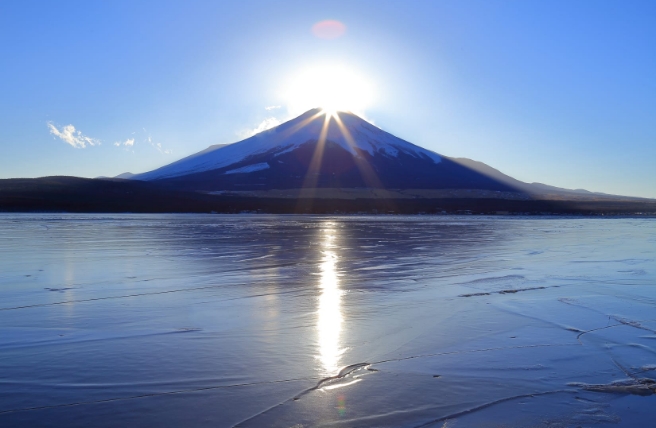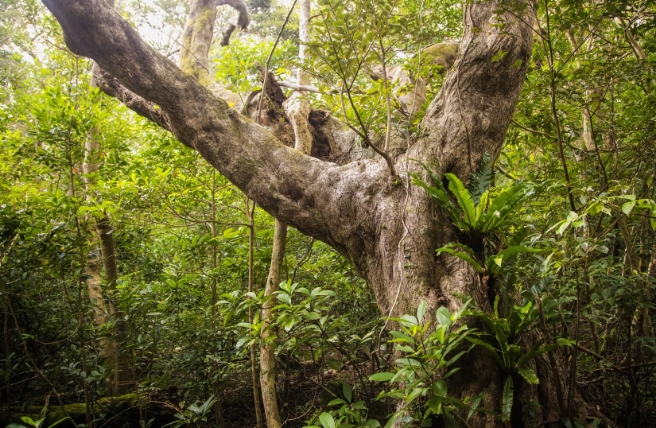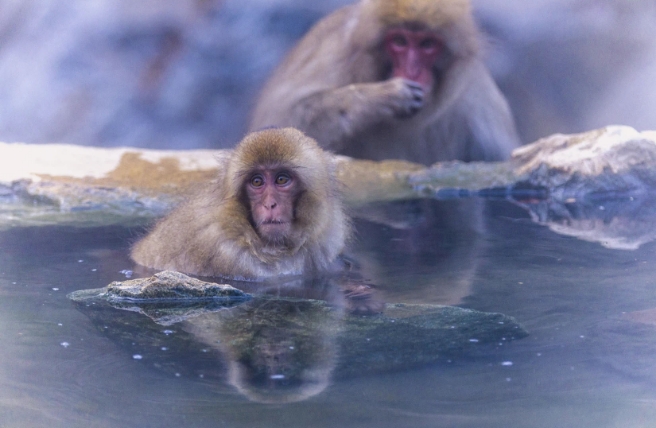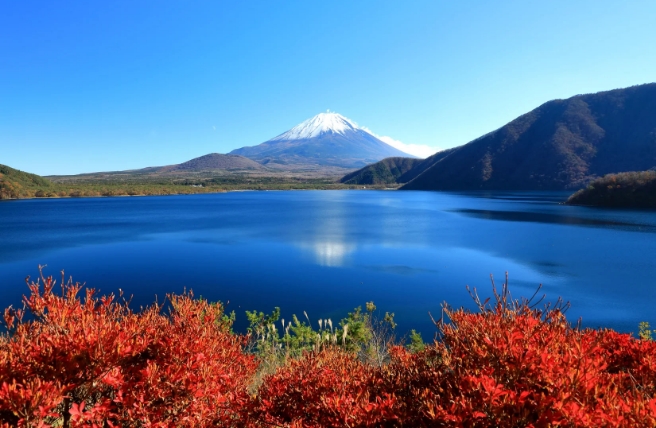
Experience the snow and winter landscapes of Japan’s national parks through fun and unusual tours and activities
Snowshoeing
Snowshoeing across Japan’s beautiful winter landscapes gives you a chance to explore areas away from resorts and groomed ski runs, and often to spot wildlife—especially if you go with an experienced guide.
The far northeast of Hokkaido is home to Shiretoko, a wild and beautiful peninsula known for its dramatic landscapes and wildlife-spotting opportunities. Join a 2- to 3-hour snowshoeing tour in Shiretoko National Park to explore serene, snow-covered landscapes and see drift ice off the coast. You might see some of Shiretoko’s diverse wildlife, from endangered Steller’s sea eagles to Ezo deer.

You may spot Steller’s sea eagles and other wildlife on snowshoe tours of Shiretoko
Daisen-Oki National Park is around 1,000 kilometers southwest of Hokkaido, on the Sea of Japan coast in the Chugoku region of western Honshu. While the climate in this part of the country is milder than in Hokkaido, the mountains and coastal areas along the Sea of Japan receive heavy snowfalls. Snowshoeing tours in the park include 90–120 minute treks through the forested foothills of Mount Daisen and can be customized to include sledding and warm snacks such as s’mores. As you snowshoe along, your guide will help you spot the tracks of rabbits, foxes, and other local wildlife.
Alternatively, you could try a full-day snowshoeing tour to learn about some of Daisen-Oki National Park’s most scenic out-of-the-way spots from your guide. You’ll be able to see the calm beauty of Daisenji Temple cloaked in white, and traverse snow-covered fields and forests on your way to other secluded spiritual sites.
You can also visit sacred sites in mountainous Myoko-Togakushi renzan National Park, where 2-hour snowshoe excursions lead from Shinto shrines to winter waterfalls. The park covers parts of Nagano and Niigata Prefectures.
In nearby Chubusangaku National Park, you can experience a sustainable snowshoe tour that helps preserve a rare local craft. On this 3-hour trek in the Tateyama area of Toyama Prefecture, you wear Tateyama Kanjiki: traditional snowshoes, made entirely by hand out of wood and hemp rope.
Skiing, cycling, and snowboarding
Japan’s heavy snowfalls and fine-quality snow draws skiers and snowboarders from around the world. The downhill skiing and snowboarding in the country’s resorts is undoubtedly world-class, but there are many other ways to enjoy the famed snow.
Get an adrenaline rush on an exciting fat bike tour of the snowy slopes of Nikko National Park, north of Tokyo. Fat bikes have large tires for good stability and traction on snow. On one of these tours you can ride down the snow-covered slopes of Mount Nasu and through forests of beech trees. Choose to tackle steep mountain paths or start on gentler slopes. You can take your fat bike into a gondola for access to the mountain’s upper slopes, and for sweeping views of the surrounding area.
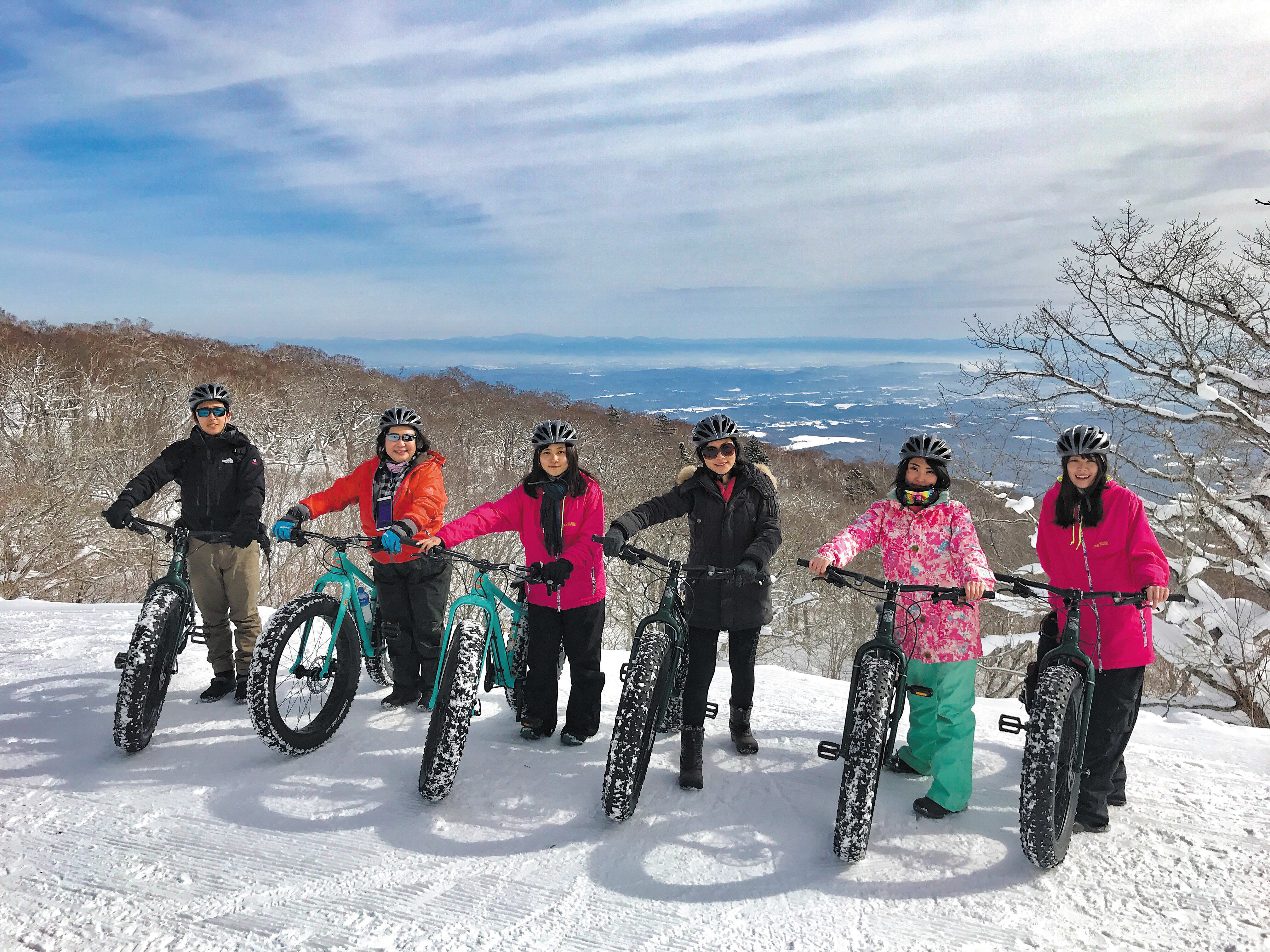
Speeding down the slopes of Mount Nasu on a fat bike tour offered by Ride Experience Inc
In Oze National Park, immediately west of Nikko National Park, you can spend a whole day skiing or snowboarding in the backcountry. Joining a tour like this has many advantages: your guide will know where to go for the best conditions and will plan the route with your skill level and safety in mind. A tour is also convenient—snowmobile or snowcat connections mean less hiking between runs and more energy for skiing or snowboarding.
Note that backcountry skiing and snowboarding should be conducted with caution. Always ensure you are equipped with avalanche safety gear (beacon, probe, shovel, etc.) as well as the appropriate warm clothing, a change of clothes, a camping stove, emergency rations, and a tarp or alpine tent. Never go into the backcountry alone, and always make sure to check the latest weather and snow conditions before going into the mountains. In the event of inclement weather, do not hesitate to cancel or postpone.
Ice adventures
Japan’s heavy snowfall is the result of a unique set of conditions: cold Siberian air gains moisture over the Sea of Japan, then meets sub-zero temperatures and tall mountains close to the coast. But these freezing winter temperatures produce more than snow. Lakes freeze over, hoarfrost forms on the branches of trees, and waterfalls become glittering sculptures.
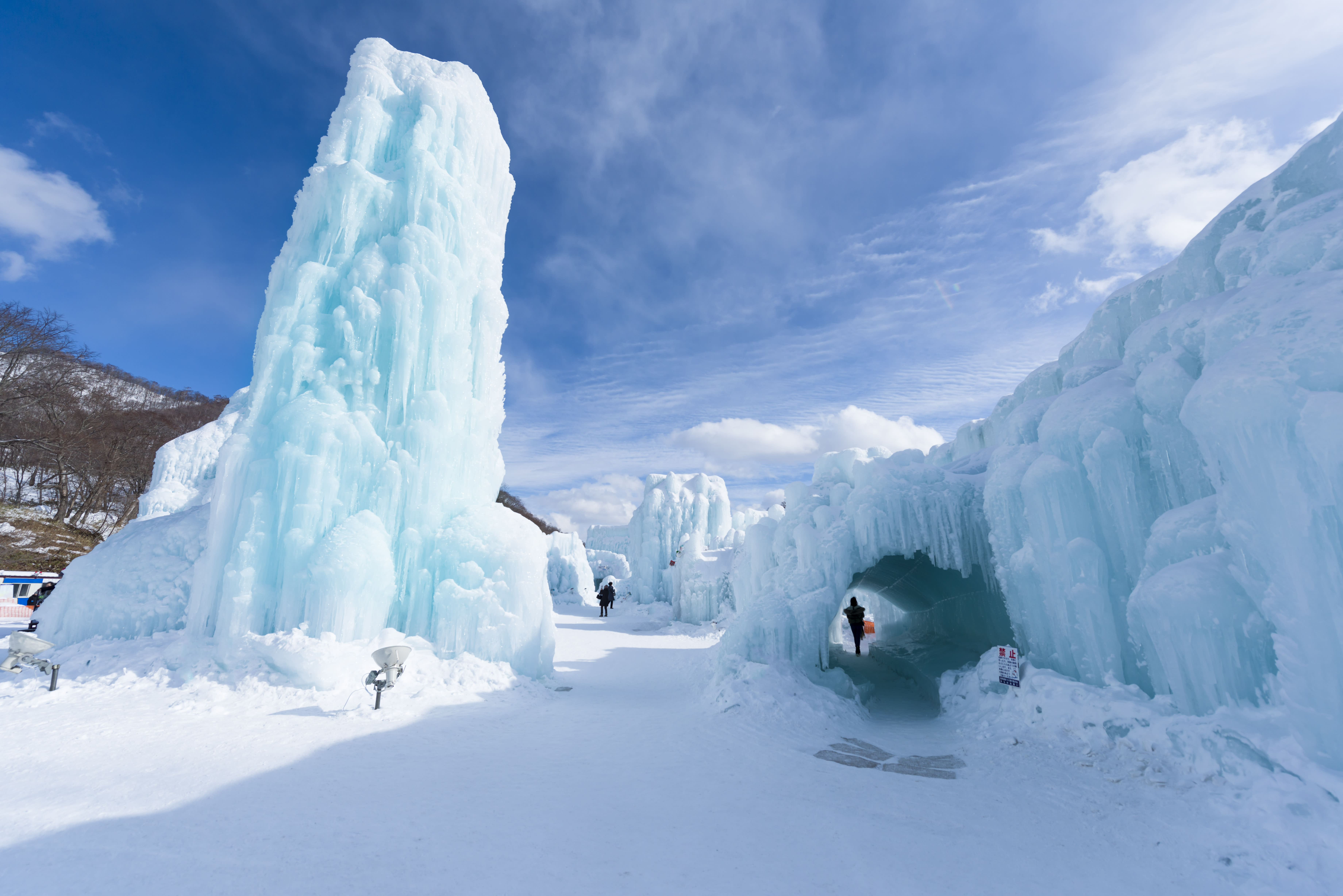
Visit frozen waterfalls, join ice festivals, and experience drift ice. It’s not only about the snow
The patchwork of drift ice, which can only be seen off the northeastern-most tip of Hokkaido, is one of Shiretoko Peninsula’s most emblematic images. In Shiretoko National Park, you can spend a couple of hours kayaking among and walking on the floes. The tour lets you experience the ice from a new perspective and provides opportunities to spot wildlife. You might see white-tailed eagles and Steller’s sea eagles circling overhead, and possibly spot the tracks of Ezo red foxes or Japanese sables who’ve ventured onto the ice to catch fish.
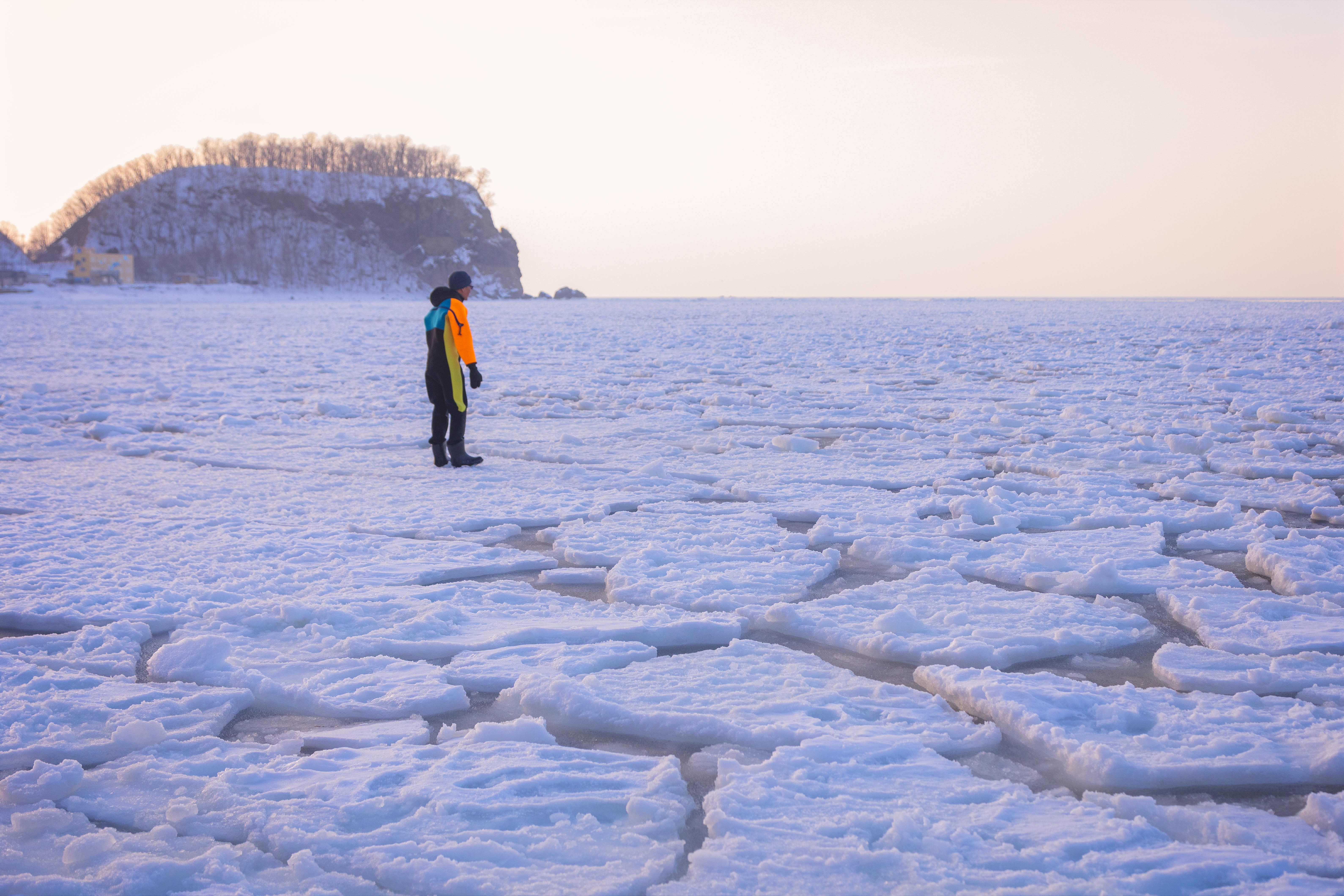
Guided drift ice experiences are a highlight of a visit to Shiretoko National Park
Further south on Hokkaido, the sea may remain free of ice, but freshwater lakes typically freeze over either partially or completely. Lake Shikotsu in Shikotsu-Toya National Park, however, is an exception. It has an average depth of 265 meters and holds such a large volume of water that its surface only partially freezes. On guided tours of the lake, you can wear a dry suit, walk out onto the ice, jump into the water, and even play in the snow along the lakeside.
There are many places beyond Hokkaido where you can enjoy ice activities, including Nikko National Park, which is easy to reach from Tokyo. You could build a day into your itinerary for an ice-climbing tour, learning how to scale a 25-meter wall of ice that forms to the side of Choji Falls. Even complete beginners can join, with all the necessary equipment and instruction provided by an experienced guide.
Evening excursions
Staying overnight in a snowy national park allows you to experience the wintery beauty of the landscape after dark. You can venture out to spot nocturnal animals, see snow come flurrying down, or enjoy stargazing in the crisp winter night air. You can even warm up in a hot spring afterward or enjoy a hot drink beside an open fire.
Winter landscapes can have a peaceful quality, with sounds dampened by heavy snow cover. Join a 90-minute evening snowshoeing tour in Chubusangaku National Park to appreciate that stillness after most day trip visitors have returned home. The guide will lead you on a gentle trek through the forest to a frozen waterfall, and then set up equipment to illuminate the sculptural ice formations for you.
In Towada-Hachimantai National Park, five different ice falls are illuminated in the scenic Oirase Gorge. A convenient 90-minute bus tour takes you to each and even picks up and drops off directly at certain hotels in the area.
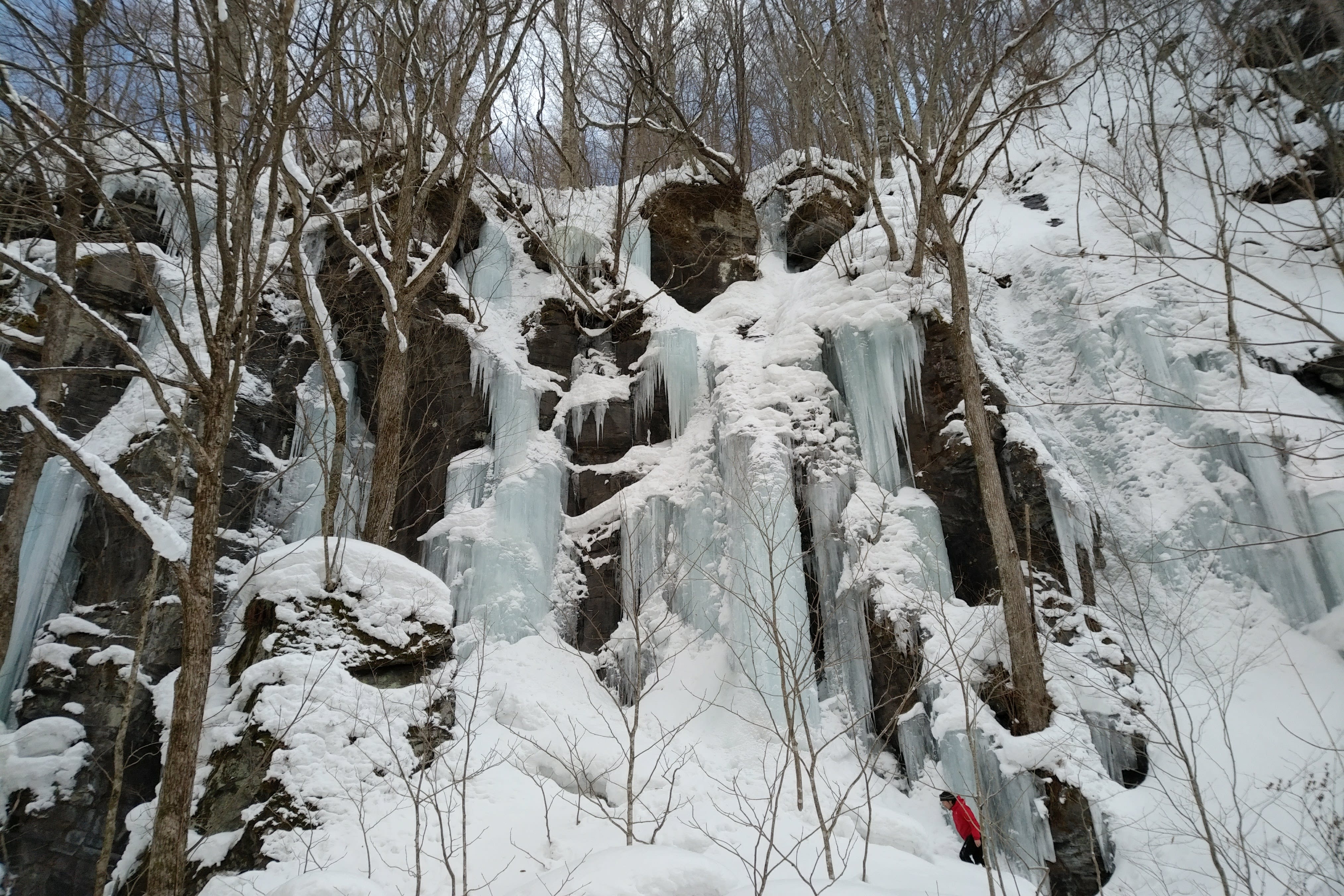
A frozen waterfall in Oirase Gorge, Towada-Hachimantai National Park. Ice falls like these are extra-atmospheric illuminated at night
Especially in remote areas like Hokkaido’s Shiretoko National Park, the low levels of light pollution can lead to some incredible stargazing. The 2-hour nighttime snowshoeing tour in Shiretoko is a tranquil experience that invites you to focus on the clear, star-filled skies above you. You might spot some wildlife such as Ezo red foxes or Ezo deer. If you’re very lucky, you might even hear the loud, deep hoots of the rare Blakiston’s fish owl.
Snowy hot springs
Japan is located at the point where four tectonic plates meet. This means that, along with its mountainous landscapes and fertile volcanic soils, the country has abundant hot springs, or “onsen.” Bathing in these warm, mineral-rich waters is a tradition that dates back centuries.
There are lots of popular snow resorts which also have natural hot springs. In Towada-Hachimantai National Park, for example, you could easily spend a few days skiing and snowshoeing, relaxing in the evenings at the venerable hot spring resorts of Sukayu Onsen and Nyuto Onsen—each with over 300 years of history. Nyuto Onsen is known for having many outdoor hot-spring baths which are perfect for enjoying the surrounding scenic snowscapes.
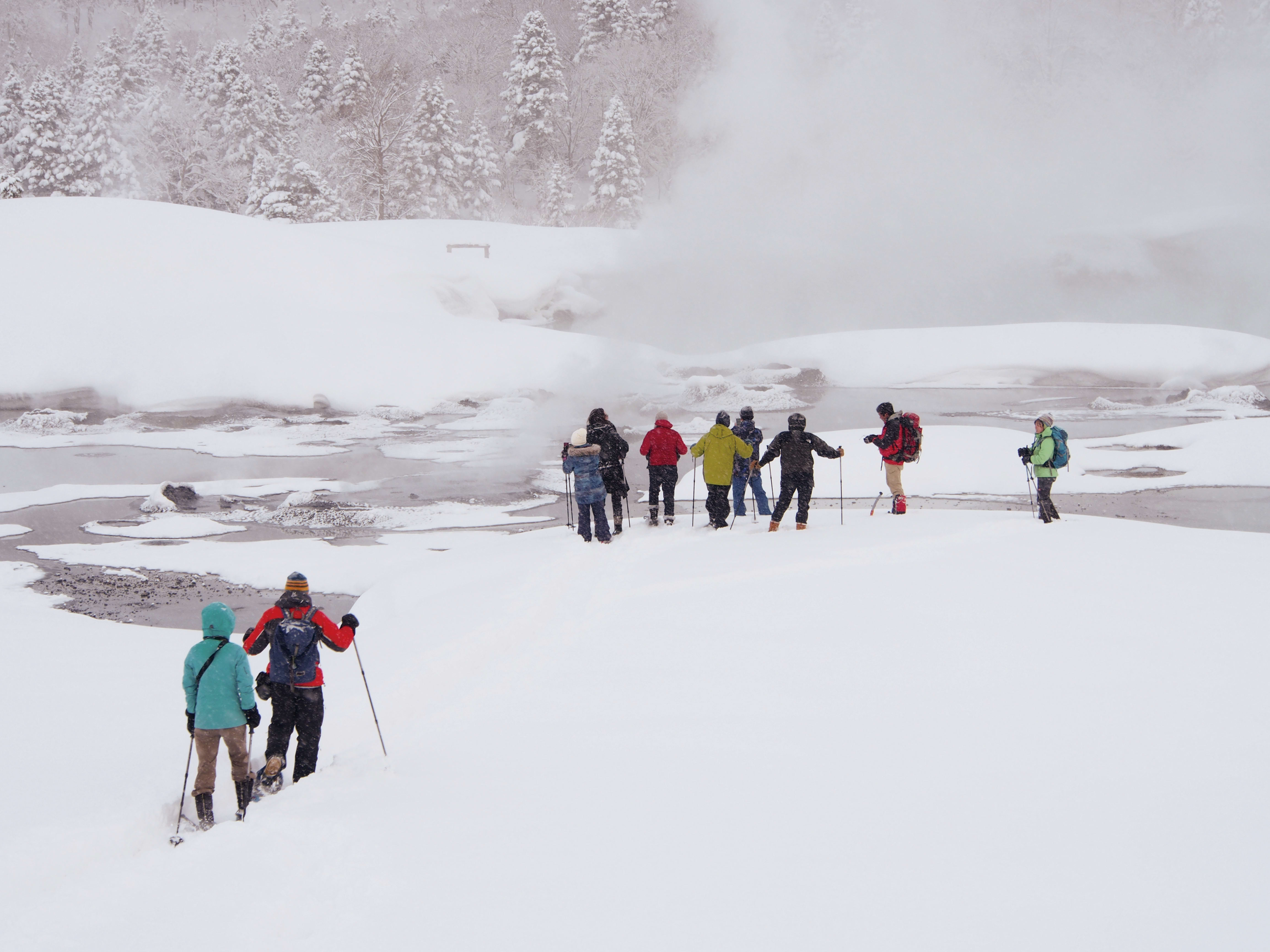
Snowshoe tour to Oyunuma Pond in the Goshogake hot spring resorts in Towada-Hachimantai National Park
Hot springs and snow activities are an ideal match for another reason: the warm waters can help relax and soothe your muscles after exercise. There are many guided experiences in Japan’s national parks that combine bathing with outdoor activities, including a 3-hour cross-country skiing trip in the Urabandai area of Bandai-Asahi National Park; and a full-day snowshoeing trek on remote Rishiri Island in Hokkaido’s Rishiri-Rebun-Sarobetsu National Park.

Humans are not the only species to enjoy the snowy hot springs of Japan’s national parks in winter
You can also combine winter hot-spring soaks with casual sightseeing. Joshin’etsukogen National Park is famous for the Japanese macaques, or “snow monkeys,” who have taken to bathing in the hot springs of Jigokudani. After seeing the monkeys, you could stay overnight in a nearby hot-spring resort to try the local waters yourself. And in Nikko National Park, you can time your visit to Yunishigawa Onsen to coincide with February’s Kamakura Festival, in which small snow huts are built around the town and illuminated with candles in the evening.
